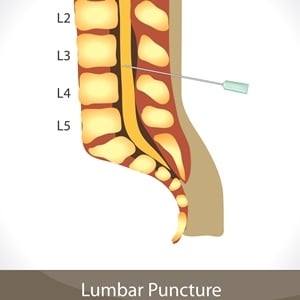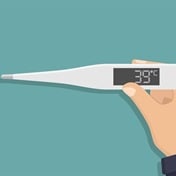
This is where a doctor uses a special needle - a spinal needle - to puncture the spinal cord covering membranes, and either drain spinal fluid (CSF) for testing (microbiology, cytology or virology), or to inject anaesthetic agent to provide pain relief, for example for a caesarean section.
Alternative names:
Sometimes referred to in the layman's terms as "lumbar punch" or "spinal tap". Referred to as a spinal anaesthesia when done as part of a regional anaesthesia block by an anaesthesiologist.
Why is the procedure performed?
A true lumbar puncture is usually performed to try and identify a causative organism or substance in the spinal fluid around the spinal cord and brain that is causing illness. Most commonly this would be when meningitis is suspected. Otherwise it is for administering anaesthetic agent.
How should I prepare?
This is either an emergency procedure (for possible meningitis) or a planned anaesthesia - only in this latter case can one prepare. The preparation is simply the knowledge that if the spinal block does not relieve pain, a general anaesthesia may be required. Calmness preventing an anxious episode makes the procedure easier.
The doctor may give some prophylactic antibiotic, so inform them if you are allergic to any antibiotics.
How is the procedure performed?
When performed for a possible infection in the brain and its surrounding tissues, the doctor will first ensure there is no brain swelling or risk of coma before performing the procedure, either by doing a CT-scan of the brain or looking at the back of the eye (papilloedema).
The doctor will position the patient either on their side or sitting forward (usually for spinal anaesthesia and in obese patients) with the back arched, so that the spinal processes are easily felt. The skin over the lower spinal bones (L3, 4, or 5) is cleaned and then the doctor will identify the correct spinal space, give some local anaesthesia and perform the procedure.
If it's for analysis, the fluid will usually be sent for culture and microbiological tests and viral or fungal tests.
The needle is then removed and a dressing placed over the puncture site.
Risks
A reasonably common complaint is a severe headache after the spinal tap, treated by remaining supine (lying down) for a few hours. The major risks are damage to the spinal nerves or the spinal cord, but this is rare. Bleeding can also result in a clot compressing the spinal cord or nerves (epidural haematoma), but again this is uncommon. If the pressure in the brain is high, there is a risk of deterioration in level of consciousness.
Any area of infection in and around the site of the puncture is a relative contraindication to the procedure, and may lead to a postponement, unless the risk of missing meningitis is high.
Limitations:
The spinal fluid may not show the cause of the pathology. The spinal anaesthesia may not be effective.
(Dr T C Hardcastle, Senior Surgeon: Department of Surgery, Tygerberg Hospital / University of Stellenbosch)




 Publications
Publications
 Partners
Partners











